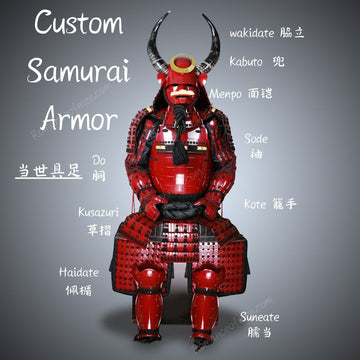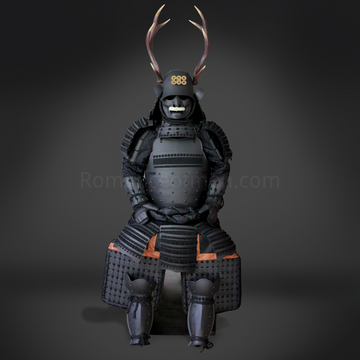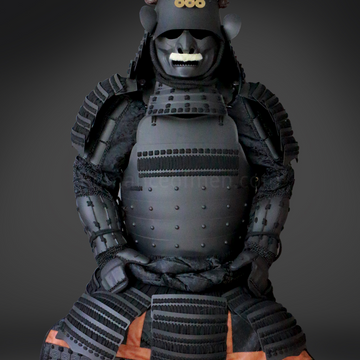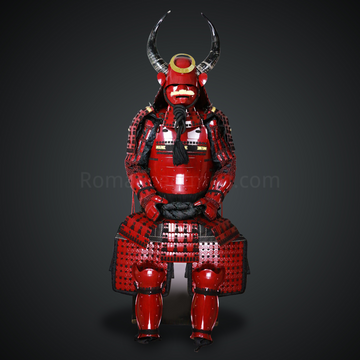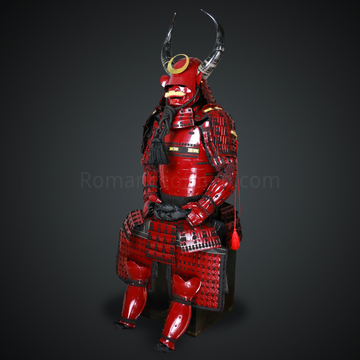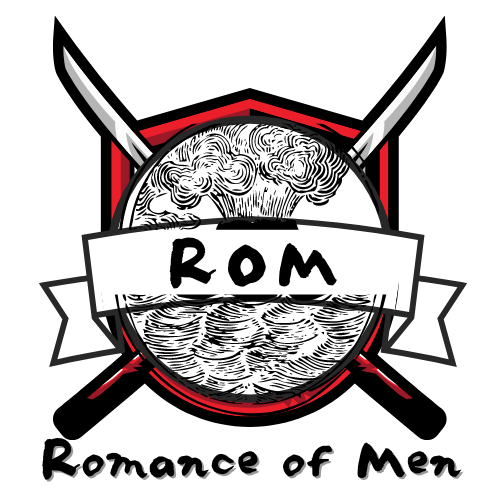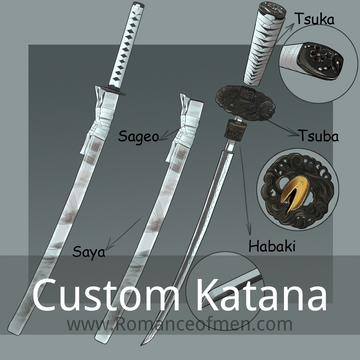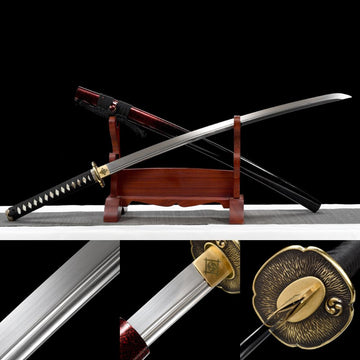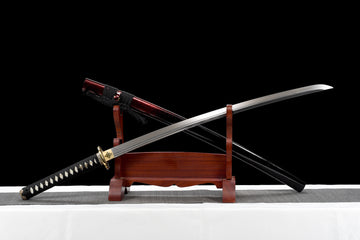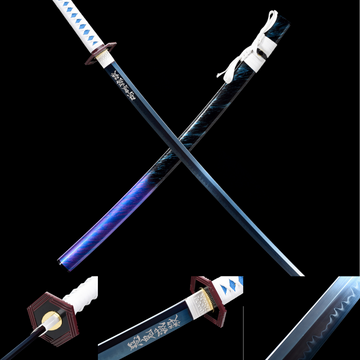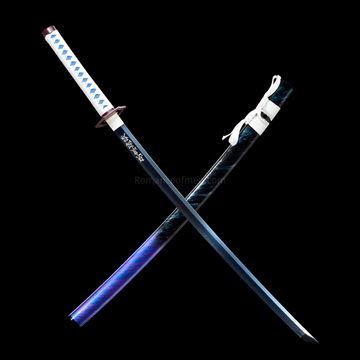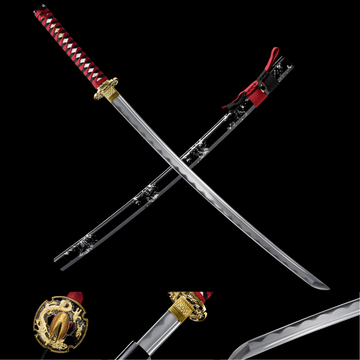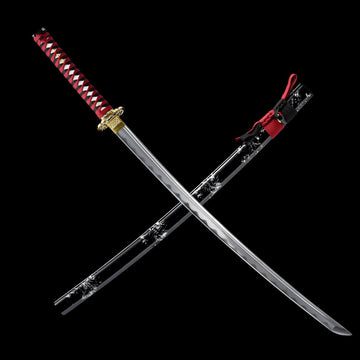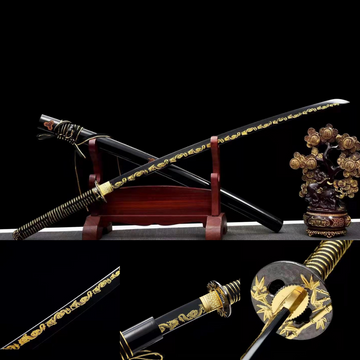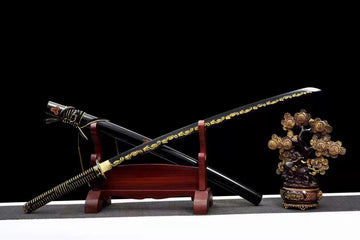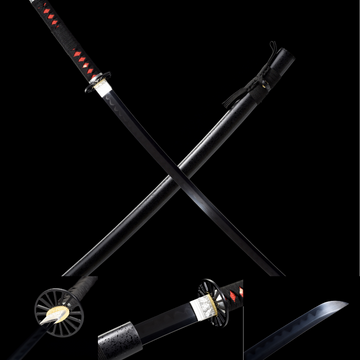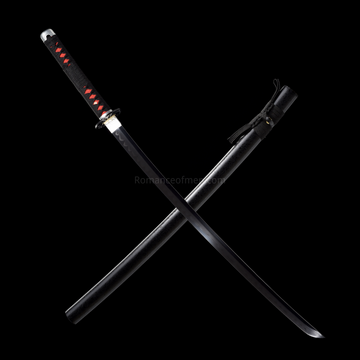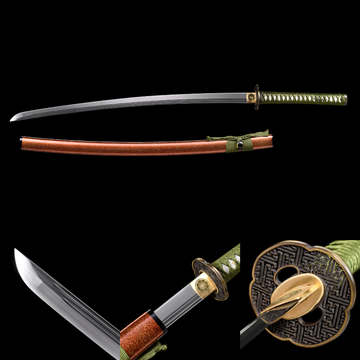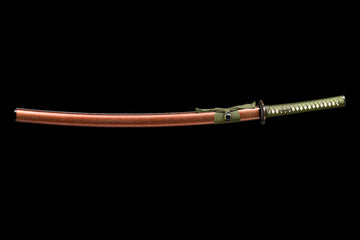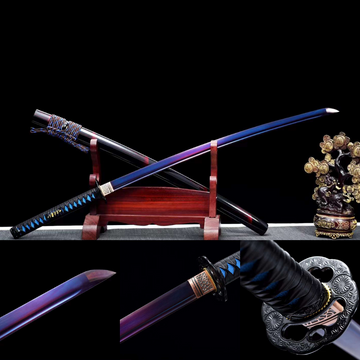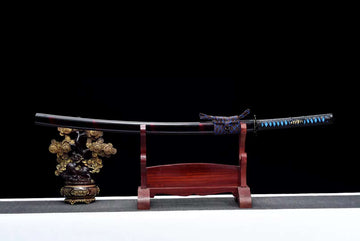Introduction The Samurai Shoulder Armor Sode Types and History
From Battlefields to Artistry: Exploring Samurai Sode and Its Cultural Significance
Table of Content
- What is Sode in Samurai Armor?
- History of Samurai Shoulder Armor Sode
- Major Types of Samurai Shoulder Armor Sode
- Lower ranking samurai and their Sode
What is Sode in Samurai Armor?

“Sode” (袖) are the shoulder armor of traditional Japanese samurai armor, attached to the cuirass and covering the upper arms. They come in various styles and lengths, with articulated plates for flexibility. Along with the helmet (kabuto), cuirass (dō), and leg guards (haidate and suneate), they form the “yoroi” or “gusoku” armor system, reflecting samurai martial traditions and craftsmanship.
Material of Shoulder Armor Sode
Japanese shoulder armor were traditionally made from iron, leather, and lacquered for additional protection and decoration. The plates (Kozane) were laced together with silk or leather cords.
Sode could be highly decorated, featuring intricate lacquer work, embossed designs, or family crests (kamon), the top plates often comes with brass fittings.
History of Samurai Shoulder Armor Sode
Sode's history begins with the “Tanko” (短甲) and “Keiko” (挂甲) armors of the Kofun period, and it has changed its form many times. Therefore, there is a significant difference in shape between the “Oyoroi” (大鎧) sode born in the late Heian period and the “Tosei Gusoku” (当世具足) sode of the late Muromachi period. How did the sode change their shape over time? this article will introduce the origin of the ode and the major types.
Origin of Sode
It is said that the origin of the Sode is the “shoulder armor” (肩鎧) attached to the “Tankou” (短甲), an armor used in the Kofun period.
The shoulder armor of the Tankou was made by connecting horizontal plates (板札) with cords or leather, and it could be moved flexibly. Many artifacts expressing the shoulder armor of the Tanko have been found in the Haniwa (埴輪) armor excavated from the tombs of that time.

Next, the “Keiko” (挂甲) was introduced to Japan from the continent in the late Kofun period. The Keiko is thought to have been designed for mounted combat because it is shorter than the Tanko. And the shoulder armor of the Keiko was made by connecting small plates (小札: small metal or leather plates). It is said to have been more flexible and fit the body better than the shoulder armor of the Tanko.

In addition, the Tanko and Keiko were equipped with accessories such as helmets (兜), bodies (胴), grass skirts (草摺), gauntlets (籠手), and shin guards (臑当).
Evolution of Sode
Shoulder armor is an essential component of many types of armor around the world, but it plays a particularly significant role in samurai armor, especially in the case of the Oyoroi.
During the late Heian period, when mounted archery was the mainstream form of warfare, the main weapon of samurai was Yumi (Bow). Battles often involved one-on-one exchanges of arrows. The shoulder armor of the Oyoroi, known as Osode (meaning "large sleeve" in Japanese), was an important element both for protection and the samurai way of fighting.
The Osode measured around 33 cm in width and 39–40 cm in length. It was designed to function as a protective shield against arrows in direct combat. Since samurai needed their right hand free to draw the bowstring, it was common for them to wear Osode only on the left side. This left-side Osode was called shamukō (射向), meaning the side exposed to incoming arrows.
However, as warfare evolved and melee weapons such as the yari (spear) became more popular, the advantages of Osode turned into disadvantages. The long-range thrusting and swinging movements required by melee combat demanded greater arm flexibility. The large Osode would swing excessively during such movements, with its upper plates often striking the wearer’s neck, making it cumbersome and inconvenient to wear.
To address these issues, various modifications were attempted. For instance, smaller plates were introduced, and fastening cords were reinforced to reduce movement. Despite these efforts, the Osode became increasingly impractical as the nature of warfare shifted. Along with the decline of Oyoroi, the Osode gradually fell out of use.
In its place, narrower and more practical types of shoulder armor, such as Hirosode and Tsubosode, gained popularity. Over time, the Osode transitioned from a functional piece of armor to a symbol of status and formality, particularly during the more peaceful time like Edo period.
Major Types of Samurai Shoulder Armor Sode

The “Oosode” (large Sode) were an integral part of the “Oyoroi” (great armor), which evolved from the “Tanko” (short armor) during the Nara to early Heian period. The Ooyoroi, used primarily in mounted archery battles, was heavily built to prevent arrows from penetrating. The Oosode, large Sode, were added to this armor to deflect arrow attacks. They were made of small plates (Kozane 小札), similar to the Sode of the Tanko, and were tied to the shoulder without adhesive, allowing them to be used as shields.

The Osode are not attached to other parts. Therefore, they can be easily positioned as shields by twisting the shoulders, to deflect enemy blades or arrows when necessary. In some cases, they were worn on one side only.
広袖 Hiro sode and 壺袖 Tsubo sode


The “Hirosoode” (wide Sode) and “Tsubosode” (pot Sode) were developed for more agile movement. The Hirosoode emerged from the Nanbokucho to the early Muromachi period due to changes in battle tactics. The Tsubosode, smaller and tighter around the arm, came into use in the Muromachi period.

The “Tosei Gusoku” (modern armor) introduced in the late Muromachi period brought a significant change to the armor. The Sode of the Tosei Gusoku, known as “Tosei Sode”, were more refined and came in a variety of materials and colors. They were curved to fit the shape of the upper arm and were attached to the shoulder with a claw-like fixture, making movements like walking and running easier.
Lower ranking samurai and their Sode
In scroll paintings depicting samurai, you often see warriors mounted on splendid horses, clad in luxurious Oyoroi. However, only high-ranking samurai could afford such armor. Serving under these high-ranking samurai were the lower-ranking samurai, often referred to as Ashigaru (foot soldiers). They wear whatever their daimyo provided, or they did their best to get a functional armor.
Making an armor is expensive, so for lower ranking samurai, often times their armor did not come with parts like Sode, kabuto, kusazuri, kote, and suneate, as the Oyoroi did. They typically wore mass-produced and inexpensive Haramaki (belly wrap armor), Do-maru (round armor), or Hara-ate (belly guards), or something similar to a headband called Hitai-ate. It’s said that they often went into battle almost barefoot.
In the late Muromachi period, during the Sengoku era when group warfare became prevalent, lower-ranking samurai began to play a more crucial role in battles. They were “half-farmer, half-soldier,” ordinary peasants who were conscripted as soldiers in times of war. Therefore, they generally did not prepare their own armor; instead, the Daimyo (feudal lord) who ruled the land provided it.

This was called “Okashi Gusoku,御貸具足” a simple, mass-produced set of armor that included a Do, Sode, Kote, Suneate, and a war hat (Jingasa). The Daimyo’s family crest was applied to the front and back of the body and Jingasa, which was crucial for instantly identifying affiliation when moving in groups.
